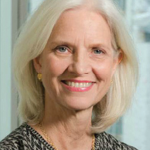“Heather Benham, the nurse practitioner who works with me, is an exceptional person who has worked on the curriculum to help bring nurse practitioners up to speed if she (or he) is new to our subspecialty,” says Dr. Punaro. “That’s been fun to watch.”
Patients Win
Dr. Punaro’s patients have gained from her involvement with the ARHP, too.
“Engaging with ARHP, supporting staff with time off or money to take courses can improve the care you give your patients,” Dr. Punaro says. “The bottom line is always the patient. How can you do the best for your patients?”
Collaboration
Dr. Punaro says collaboration and shared knowledge have always been critical to her work. She has collaborated for most of her career with Virginia Pascual, MD, a pediatric rheumatologist and investigator at Weill Cornell Medicine, New York, engaging in research projects that have, in Dr. Punaro’s words, “changed how we’ve managed some pediatric diseases.”
For example, research they conducted together in the early 2000s showed that a pro-inflammatory molecule, interleukin 1, was a major factor in systemic juvenile arthritis. Using a drug already on the market that targeted interleukin 1, anakinra (Kineret), Drs. Punaro and Pascual showed they could vastly improve the health outcomes of pediatric patients.
Many kids are diagnosed with systemic juvenile arthritis before the age of 6, presenting with high fevers (103–105º) daily or a couple times a week, often with inflammation around their hearts or other organs.
“In the past, we would have had to use a lot of steroids—very toxic medications with a lot of side effects,” says Dr. Punaro. Now, she says, they start them on anakinra. “Within an hour, sometimes, they’re in the playroom. It’s really impressive. It’s almost like a light switch is flipped.”
“The discovery, which we reported in 2005, is one of the most rewarding aspects of my career,” Dr. Punaro says. This bench-to-bedside approach to rheumatology—being able to think about and study “what’s going on at the molecular and cellular level inside the patient,” and help bring targeted therapies to the bedside—drew her to the field.
‘Engaging with ARHP, supporting staff with time off or money to take courses, can improve the care you give your patients,’ Dr. Punaro says.
The Best Possible Care
These days, Dr. Punaro spends a lot of time mentoring medical students, especially women. When she first embarked on her career, she was one of 15 women in a class of 175. Now, women slightly outnumber men among medical school enrollees. Division chiefs still remain mostly male, which is likely to change as the profession ages and more women, such as Dr. Punaro, move into the ranks.

